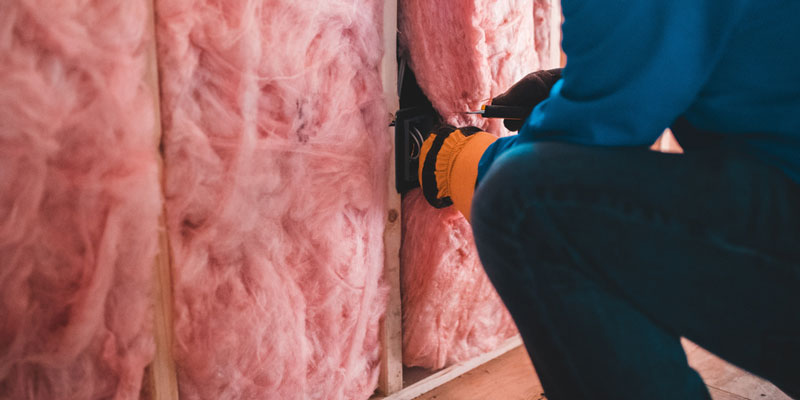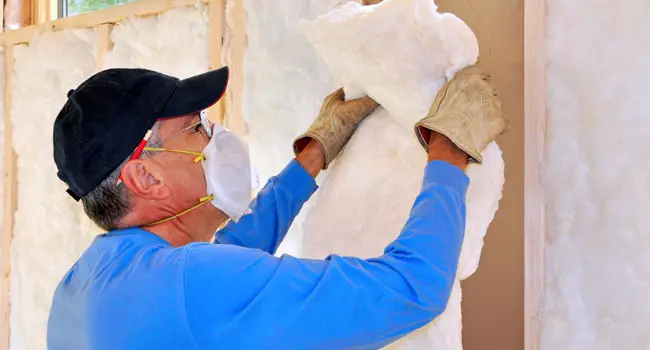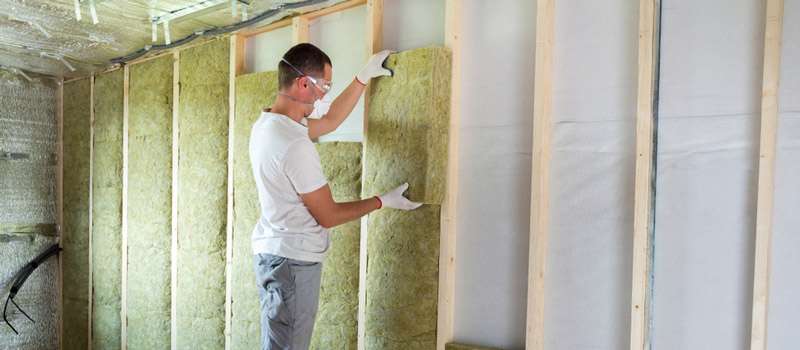Is pink insulation good for soundproofing? Yes, it’s a solid option for soundproofing your floors, ceilings, and walls. Fiberglass offers excellent sound absorption with lesser thermal insulation than the foam option.

According to the US Energy Department, nearly half of the houses in the United States are insulated, and approximately 25% of them opt for pink insulation. Hence, it’s understandable if you question the safety and efficiency of fiberglass as an insulation material.
Thus, in this post, we’ll discuss the types of fiberglass insulation, its working mechanism, pros and cons, and so on to ensure you make an informed decision.
What’s Fiberglass Insulation?
Fiberglass consists of glass known for its soundproofing and thermal properties. However, this type of insulation material offers two main benefits:

- Fiberglass insulation blocks noise from your noisy neighbors, construction sites, traffic, etc.
- It will help maintain your home’s thermal insulation all year round.
This material is a perfect blend of the high and medium density of glass fiber for absorbing low to high noise levels. Most manufacturers use recycled glass, making fiberglass insulation a more affordable option for people on a tight budget.
Considering its cheap price point, is the pink insulation good for soundproofing your house? This boils down to the R-value and STC of the insulation material.
Don’t understand what these terms are? Let’s take a quick dive into these two terms to help determine if fiberglass insulation is the best choice for your home or business space.
What is R-Value & STC?
The R-Value, Resistance Value, measures the amount of heat from the window, ceiling, and walls allowed to pass through a material. So, a material with a higher R-value will provide better thermal performance.

With this in mind, if you are staying in a colder environment like Russia, it’s best to stick with low R-value material to prevent you from freezing. On the flip, houses in hot areas are better off with higher R-value materials.
Next is the STC, Sound Transmission Class, which measures the amount of soundwave from the door, window, ceiling, and walls permitted to go through a material. So, if you’re looking to keep the external noise away from your home, the best soundproofing material should have an STC score above 50 for a nearly whisper-quiet environment.
Is Fiberglass Good for Soundproofing?
There are many great options for soundproofing, and fiberglass is one of them. However, it’s not one of the materials to reflect or block sound. Nonetheless, it helps absorb the sound to allow homeowners to enjoy their peace without noisy neighbors or traffic interfering.

Sadly, fiberglass is not the go-to for complete soundproofing. Let’s be frank; it’d be hard to achieve that, considering the doors, windows, and other openings in your house, which will lower the R-value of the fiberglass insulation.
But before purchasing fiberglass, you should check out the NRC (Noise Reduction Coefficient) rating, which gives you a better idea of the product’s soundproofing ability. The closer the NRC value is to 1, the better sound absorption it promises. Even better, you can achieve a value higher than 1 based on the object’s surface and shape.
Fiberglass insulation about 3.5 inches thick has an NRC rating of 0.90 to 0.95, which shows excellent sound absorption for a quieter space. Regardless of the purpose – commercial or residential, fiberglass insulation will significantly reduce the noise.
You might want to insulate the interior flooring and wall for maximum sound absorption. Interestingly still, you can easily control the noise in your house if you are handy by using the fiberglass batt. This method is almost foolproof to work with. They are available in different thicknesses and are suitable for 16-inch and 24-inch on-center studs.
Working Principle of Fiberglass Insulation
As said earlier, fiberglass, unlike other options available, does not block or reflect sound but absorbs them. Therefore, it’s best to stick with denser and thicker fiberglass to help absorb as much noise as possible.
It’s advisable to use pink insulation as a sound barrier instead of trying to use fiberglass to block the entire noise out of your home. It won’t eliminate all the noise, but it will significantly reduce the noise.
How to Improve Pink Insulation with Other Materials for Perfect Soundproof?
Instead of increasing the thickness of the fiberglass insulation to block out the noise entirely, you can pair it with other sound-blocking materials for your big soundproofing project.
Besides, it’s challenging to find one-size-fits-all soundproofing material that works perfectly for every sound wavelength and noise. Hence, it’s smart to combine materials with sound-blocking properties with sound-absorbing fiberglass material.
The best sound-blocking material is a gypsum board usually installed on the ceiling and walls. It’s recommended to use a thicker board to help in the fight against external noise.
Most people often use a ½-inch thick gypsum board; we advise you to opt for a thicker ⅝-inch option for a more significant noise reduction.
Worth mentioning, that you need to soundproof all openings, including windows and doors, for better results. One of the best ways to go about this is using rolled insulation or a sound muffler. And, if possible, you might want to soundproof the floors with Rockwool sound insulation for those living in a building.
Is Rockwool better than pink insulation?
The effectiveness of Rockwool and pink fiberglass insulation largely depends on the specific needs of your project. Both types have their unique advantages and disadvantages.
Rockwool, also known as mineral wool, has a higher R-value (a measure of thermal resistance) per inch than pink fiberglass insulation, which means it provides superior thermal insulation. It’s also fire-resistant and soundproof, making it an excellent choice for areas where these factors are essential. However, it is generally more expensive than pink fiberglass insulation.
On the other hand, pink fiberglass insulation is less costly and more accessible to install than Rockwool. It’s lightweight and flexible, which makes it ideal for insulating irregular spaces or around obstacles. However, its lower R-value may not provide as much thermal resistance as Rockwool. Additionally, fiberglass, unlike Rockwool, can irritate the skin and respiratory system during installation if proper safety measures are not taken.
Conclusion
To sum it all up, fiberglass is a reliable sound-absorbing material to help reduce echoes and some external noise. It won’t help block external noise completely except when paired with other sound-blocking materials.
Aside from being an excellent sound absorbent, it’s a solid heat insulator, which means more value for your money – considering its even lower price point. The pink insulation might not be the best option for you, considering where you live and the kind of noise you want to mitigate.
Nonetheless, the pink insulation would be a great addition to soundproofing projects to help you restore order to your business space or bring well-slept nights to your bedroom.
Related Resources:
